This post may contain affiliate links. We may receive a small commission, at no cost to you, if you make a purchase. Read Disclosure.
Borneo is this mystic land known for its untamed rainforest and unique jungle wildlife such as pigmy elephants, proboscis monkeys, clouded leopards, sun bears, tigers, and most famous of all – the Bornean orangutans.
But any visitor to Borneo today will be shocked by what lies in front of them. Where the rainforest once stood, more than 50% of it has been cut down since the 80s, making way for palm oil plantations, mainly.
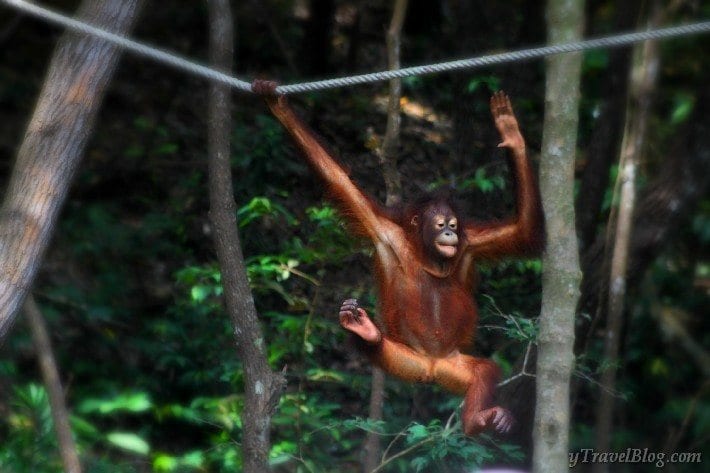
This deforestation has put many of these animals in critical danger of being extinct, and now the best way to see orangutans in Borneo, and sometimes the only way, is at an Orangutan Sanctuary in Borneo.
Fortunately, there are a few Orangutan rehabilitation centers in Borneo where orphaned babies can be cared for before they return to the wild.
In this guide, we’ll share with you each of the Orangutan Sanctuaries in Borneo and what they work towards.
Where To See Orangutans in Borneo
Borneo is an island made up of three countries: Malaysia, Indonesia, and Brunei. The best places to see orangutans in Borneo are on the Malaysian side of Borneo in the north, in the provinces of Sabah and Sarawak.
This is where most of the orangutan sanctuaries in Borneo are placed since they have connections to the rainforests of Borneo.
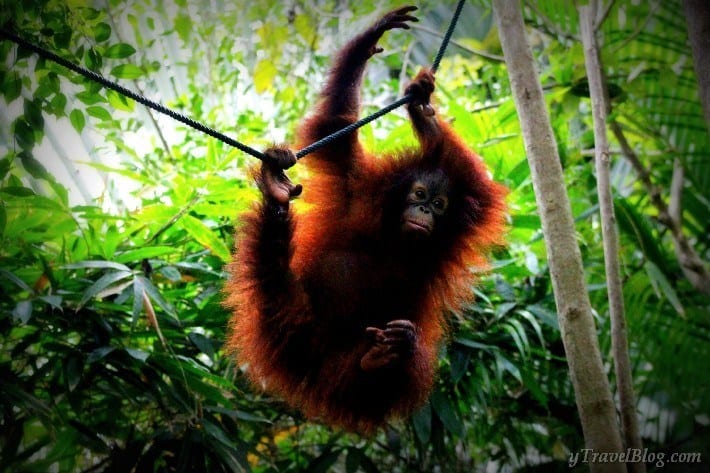
Most of Borneo belongs to Indonesia, and you can find a few sanctuaries in the Central and West Kalimantan provinces. However, most of the orangutan population of Indonesia lies on the island of Sumatra, to the southwest of Borneo.
Here are all the orangutan sanctuaries in Borneo and their history.
1. Sepilok Orangutan Rehabilitation Centre (Pusat Pemuliharaan), Sandakan
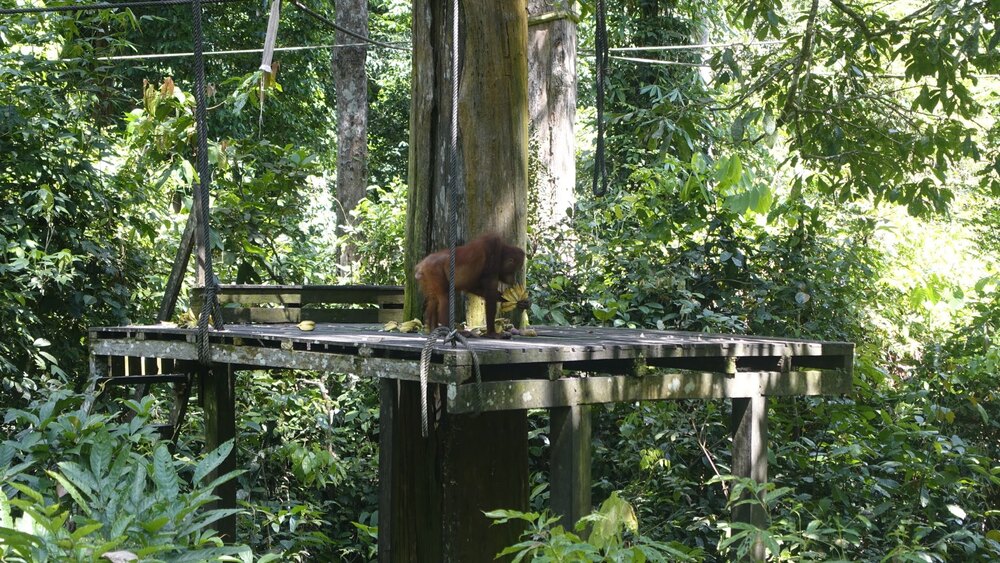
Perhaps the most well-known orangutan sanctuary in Borneo is the Sepilok Orangutan Sanctuary located just 25km outside Sandakan, to the west of the Sabah region of Borneo.
The rehabilitation centre has been open since 1964 and was the first official orangutan rehabilitation centre in Borneo, dedicated to the rescue and rehabilitation of orphaned baby orangutans.
Most of the orangutans were rescued from logging sites, illegal hunting or kept as pets, or those who wandered into plantations looking for a home.
You are pretty much guaranteed to see young orangutans at the nursery, where visitors can view the babies playing from behind glass.
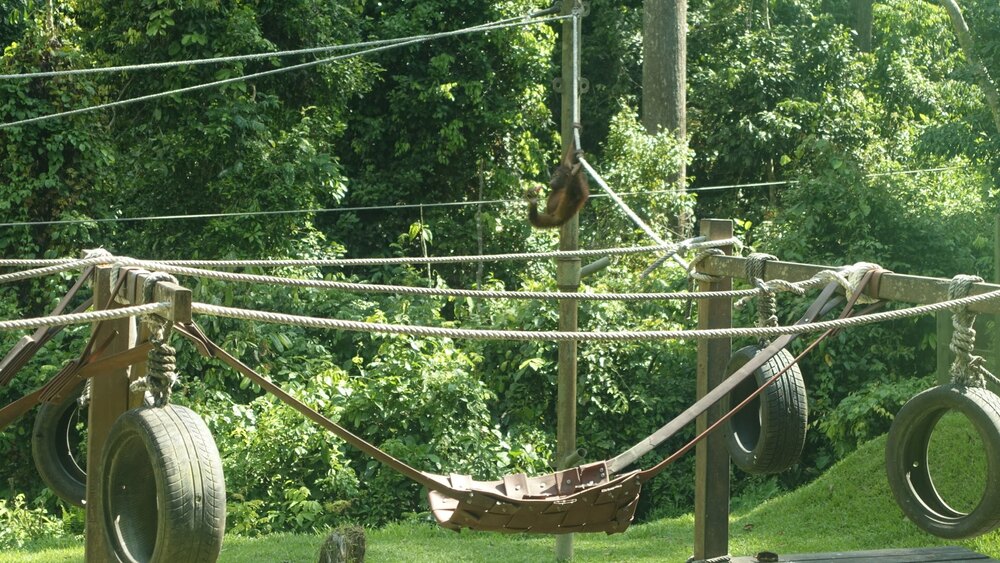
These babies and youngsters are not ready to be out in the wild but are learning to survive and play on a huge climbing apparatus made of rope swings, climbing frames, and rope crossings.
Tourists can watch them play from two large indoor seating areas that have a large window overlooking the play area.
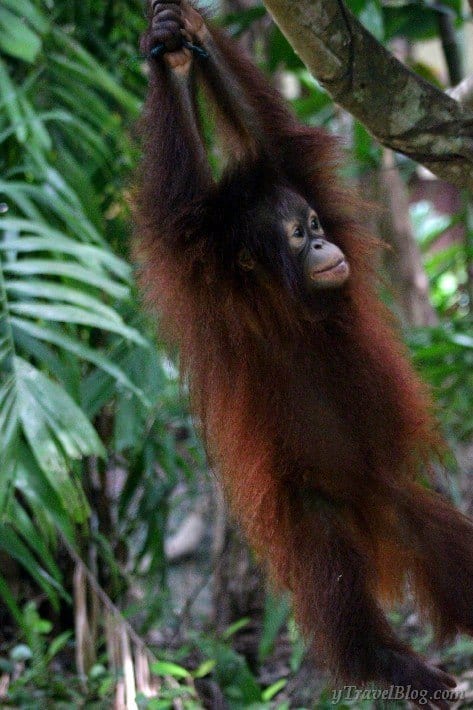
What’s special about this centre is that it has no walls. There are about 60-80 orangutans that live in the comfort of the surrounding 10,610 acre Sepilok Forest Reserve, and they are free to come and go as they please.
Of course, you can always see them coming back during feeding time, which happens twice a day when rangers bring out food of fruit, leaves, bark, and insects, and place them on a feeding platform.
But other than that, there are no walls or cages, or boundaries, and they can live happily in their natural habitat.
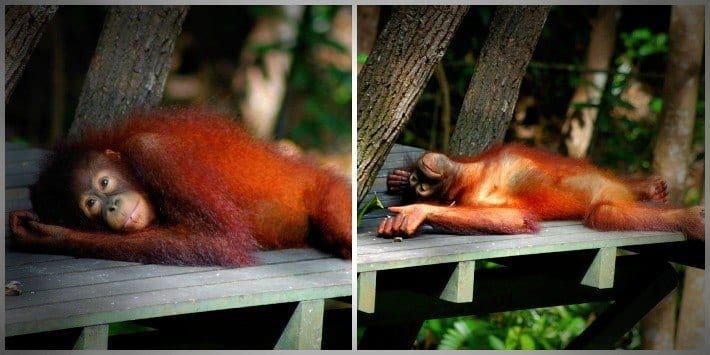
Private Full Day Sepilok Orang Utan, Bornean Sun Bear and Rainforest Discovery Center Tour
During this full day eco-tour, journey into the super-diverse Bornean rainforest near Sepilok, home to thousands of species of plants and animals. Visit three conservation centres in the area to learn how local people are fighting to preserve Borneo’s natural environment and return native fauna to their natural habitats. Book your tour here.
Sepilok Orang Utan Rehabilation Centre with Lunch at English Tea House
This half-day tour visits the sanctuary that aids the animals in rehabilitating back into the jungles of Borneo. Walk through the forest on a raised walkway to see the animals and watch them being fed by rangers. Book here.
2. Kinabatangan River
Not far out of Sandakan is the Kinabatangan River, also known as the wildlife corridor. Here is where the jungle stops and the plantations start, separated by the river.
This is considered one of the best places to see wild orangutans, who often nest high in the trees next to the river.
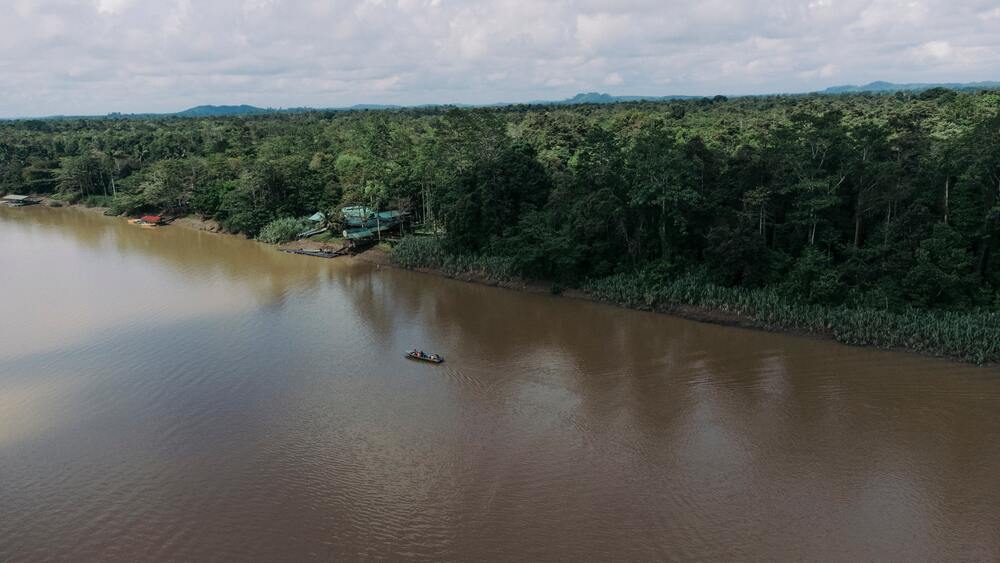
While it’s not a sanctuary as such, it’s still a protected area, and tourists can stay in nearby jungle lodges before taking a boat cruise out onto the river and its tributaries, keeping an eye out for these elusive endangered species.
While there is no guarantee you will see an orangutan here, it does allow you to get closer to their home and to see the conservation efforts up close.
As your boat sails down the water, you’ll notice several ropes leading from one side to the other. This is to allow animals to cross over, since many still often cross the river in search of food and home, unknowing of the plantations that reside on the other side.
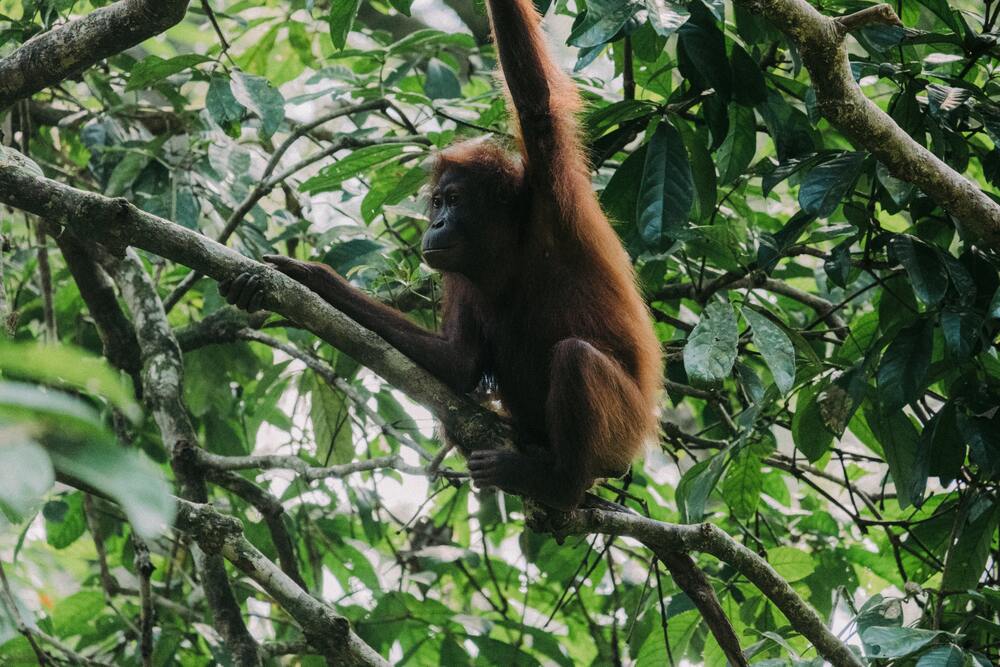
If you don’t see orangutans on this trip, you won’t go home disappointed. This forest area is also home to several other native animals to Borneo, such as pygmy elephants, macaques, and thousands of species of birds.
You can even opt for a night walk where you can get a glimpse of nocturnal animals such as snakes, frogs, insects, and maybe even a pair of beady crocodile eyes peering out of the water.
The Kinabatangan Wildlife Lodge is a comfortable and convenient place to stay for those interested in visiting this wildlife paradise.
This Kinabatangan River Cruise Day Trip travels through the Sukau-Kinabatangan Wildlife Sanctuary, the tour offers a great opportunity to see wildlife unique to this part of Borneo, including include monkeys, orangutans, pygmy elephants, and various birds.
3. Matang Wildlife Centre
The Matang Wildlife Centre is a particularly special reserve. It was established over 15 years ago on a piece of 180 hectacre land, in the western corner of the Kubah National Park.
It works to restore and protect the rainforest of Sarawak, as well as to rehabilitate rescued animals for reintroduction back into the wild where possible.
One of the highlights of visiting Matang Wildlife Centre is, without a doubt, seeing the orangutans up close and personal.
Sarawak has the highest population of orangutans in Borneo, but sadly, most of the orangutans at this centre were confiscated from members of the public who illegally kept them as pets. This means they don’t know how to look after themselves in the wild, which the Matang Wildlife Centre aims to correct.
It is their mission to educate and train the orangutans to fend for themselves so they can survive on their own in the wild.
It’s an unforgettable experience to see these amazing primates up close. To see their intelligence thriving allows you to truly recognize just how fragile these ecosystems are, why we need to safeguard them and what we stand to lose if something were ever to happen.
With passionate people dedicated to preserving its beauty and diversity, we can rest assured that the future of Matang Wildlife Centre looks bright.
4. Tabin Wildlife Reserve (Part of Tabin Wildlife Resort)
The Tabin Wildlife Reserve is where you can see phase two of the rehabilitation program. After their time at one of the orangutan sanctuaries in Borneo, the orangutans are released into the wild.
But what happens from there? This is where the Tabin Wildlife Reserve comes in. This reserve is where orangutans are usually released from Sepilok.
The reserve is located in Tawau, in the southeast region of Sabah, Borneo.
As well as being able to see orangutans in their natural home, you might also get a chance to see leopards, pygmy elephants, and more.
Visitors to the reserve are taken through the forest on a safari experience, led by knowledgeable guides, who keep in touch with one another by walkie-talkie, keeping each other informed of any wildlife sightings.
5. Danum Valley Conservation Area
The Danum Valley is similar to the Tabin Wildlife Reserve in that visitors can also stay at a resort nearby, and then take guided tours into the reserve to see the orangutans in their natural home.
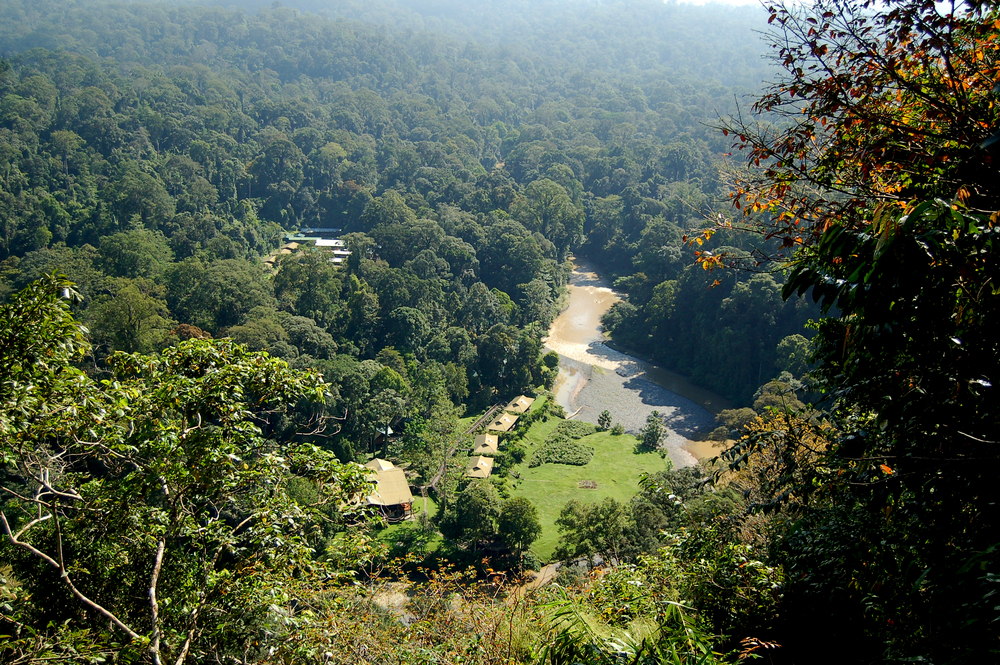
It’s a huge 438 square kilometres area of protected, undisturbed lowland in Sabah, that has a huge array of tropical plants and flora and fauna, making it a thriving habitat for not just orangutans but many other species of animal in Borneo.
Gibbons, mousedeer, clouded leopards, Malayan sun bears, bearded pigs, pygmy elephants, and deer, as well as over 270 bird species, call this area home.
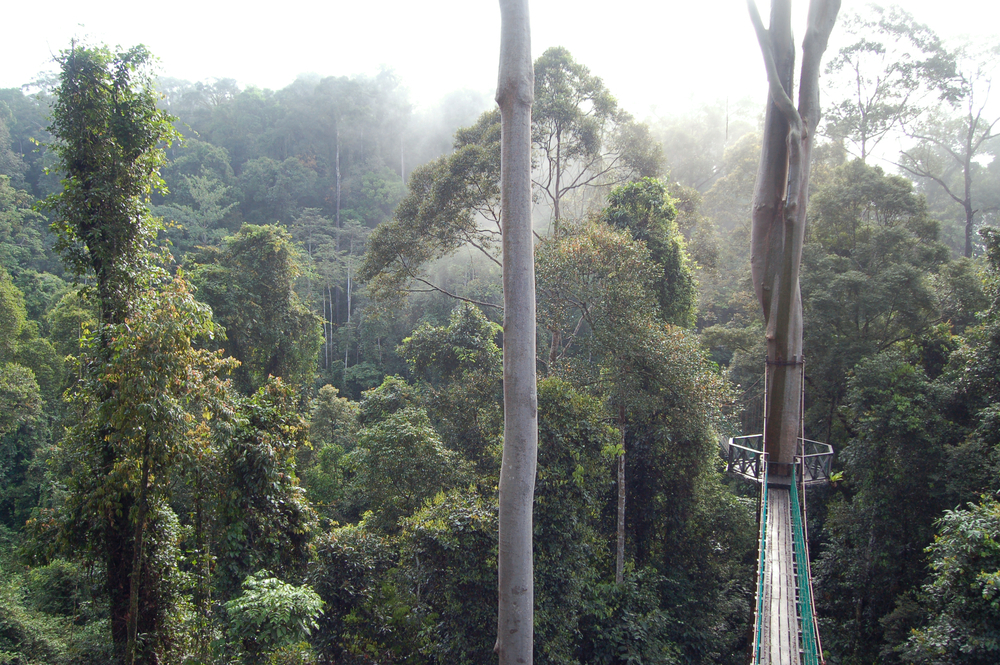
You can enjoy being in the heart of the Bornean jungle, on the banks of the Danum River, where wildlife thrives.
In the daytime, take a safari out into the jungle to see if you can spot some of the local residents hiding in the treetops.
Of course, wildlife sightings are never guaranteed, but there’s more enrichment to seeing these intelligent apes in their natural home than behind glass in a zoo.
6. Tanjung Puting National Park
Tanjung Puting National Park is a protected area on the Indonesian side of Borneo.
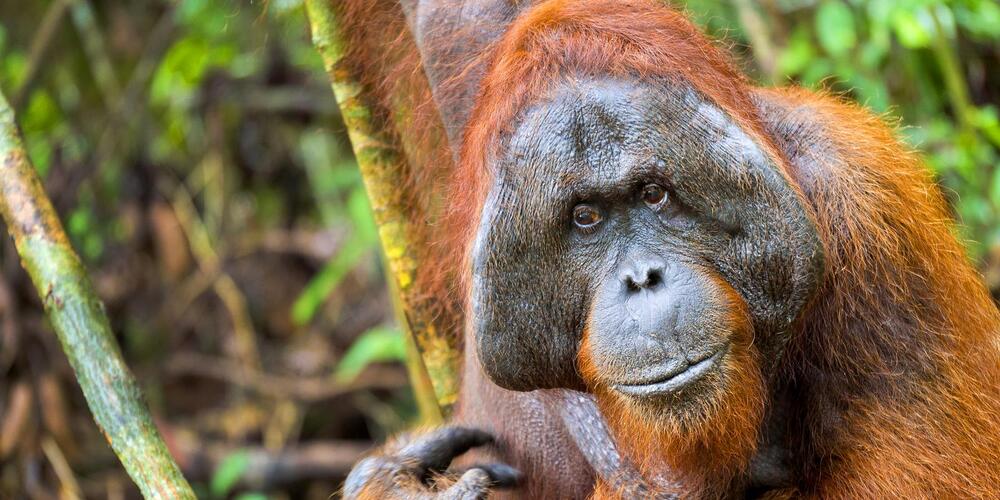
It’s made up of 416,040 hectares of forest, swamp forest, mangrove, and coastal beach forest, and is accessed from Kumai by speedboat along the Kumai River. The Kumai River forms the northern border of the park. Above that, the forest has been cut down and turned into palm oil plantations.
The park was established in the 1930s by the Dutch colonial government as a place to protect the orangutans and proboscis monkey. It was designated as a UNESCO Biosphere Reserve in 1977 and made into a national park in 1982.
It was teeming with natural life in the 1930s, and the same is true today.
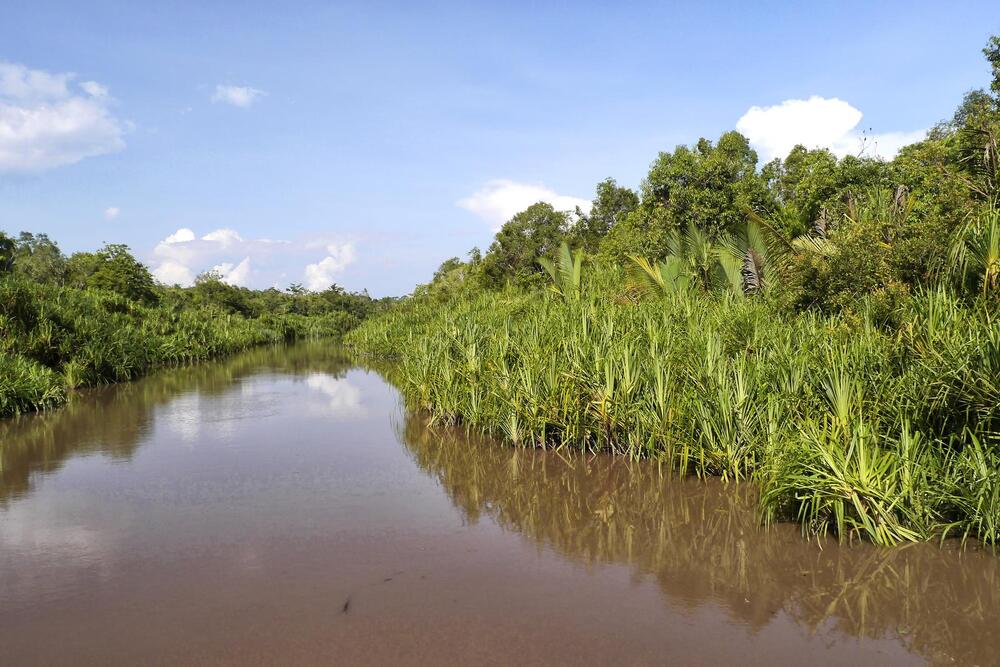
Visitors can take an ecotourism tour of the park, which consists of a boat tour along the park’s rivers and tributaries. As you sail through the calm waters, you may catch a glimpse of gibbons, macaques, leopards, sun bears, porcupines, and sambar deer.
Of course, the main animal people come here to see, are the orangutans, which are living in their natural habitat – which few locations on earth can boast.
Seeing these friendly giants swing from branch to branch truly offers something special; they are brought food to eat several times a day by tour guides, so no time is wasted in finding them! Of course, no sightings are ever guaranteed.
How To Get To Borneo
There are two main airports in the Sabah region of Borneo, Kota Kinabalu and Sandakan. Kota Kinabalu is the gateway to Borneo since most flights come to here, but it’s a long way to get from here to the orangutan sanctuaries.
Your best bet would be to take a direct flight from Kota Kinabalu International Airport to Sandikan, and then take a bus from there to the reserves you want to visit.
Top tip: Install the Grab App on your phone to order taxis, which is usually cheaper than paying by the metre. This is like the Uber of Asia.
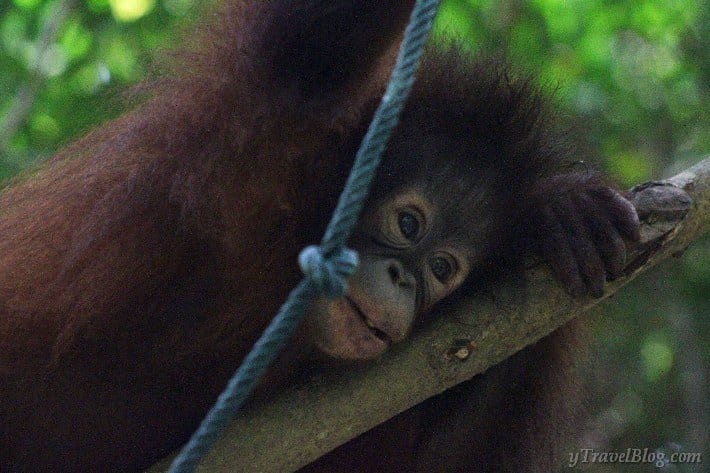
Final Thoughts On The Orangutan Sanctuary in Borneo
They need us more than ever.
A friend told me of his experience encountering orangutans both at the reserve and while remote jungle trekking in the Sabah. Of course, he compared the wild encounter to be more worthwhile.
I don’t think you could beat the thrill of that, but there is so much joy to be had in spending time watching them play in sanctuaries as well.
Whether it’s a random encounter or a planned visit, it’s heartwarming to be close to their carefree, playful spirit.
I wish we humans could be more like it in all we do.
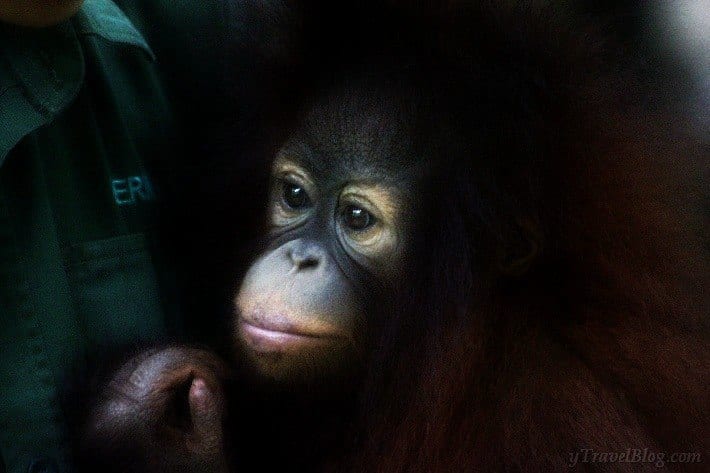
More Malaysia Travel Tips
Are you thinking of visiting other parts of Malaysia? Then you may find the below resources useful!
Have you seen orangutans in the wild before or in a sanctuary? Share your experiences below in the comments.
[ad_2]
Source link
